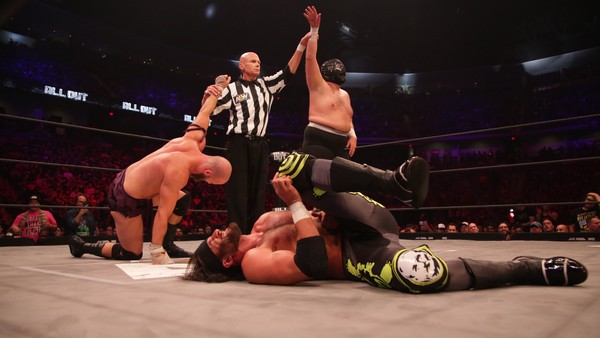How AEW Did The Impossible

The hottest pro wrestling crowd in an age reacted more silently than the empty seats at the first WWE Performance Center show. A flat dud of a debut, it felt like a bizarre and thoroughly unwanted sports entertainment glitch.
Flashes of that exhilarating act resurfaced at Fight For The Fallen in a good if overlong three-way match won by Evil Uno and Stu Grayson over Jurassic Express and Jack Evans and Angélico. Virtually every take was identical: the work is good, but the presentation is generic spooky bullsh*t at odds with the promised alternative sporting presentation. Those creepers looked worse than anything sports entertainment had spewed forth, too. Not remotely scary - as if that was even viable in this context or indeed any modern wrestling context - they looked like they were wearing sweatpants and masks imported from the über-grim leisure centre era of 1990s British pro wrestling.
The act, and this is the real indictment, failed to spark those early, rapturous Dynamite crowds. Ranging from molten to remarkably polite, by wrestling fan standards, they had no interest at all in the Dark Order's only-good output. The dissonance was too much: Grayson in particular generated pops with an arsenal precision-engineered to electrify, but he was a heel working a...well, it was hard to tell which gimmick. The very name of the act suggested a supernatural element, but, mercifully, they didn't possess any powers beyond a strange segment in which they controlled the mind of Alex Reynolds through a TV set in a hotel room. If this was in fact more of a mind control deal - and again, that was sh*t fans wanted to remain in Stamford - it wasn't effective. The Dark Order were a mildly successful midcard act per a sports-adjacent win/loss rankings system that made such a gimmick feel untenable in the first instance.
The very name of the stable was also a plot hole, one that the soft reboot didn't mask.
CONT'D...(2 of 6)